- Generous equipment and competitive price
- Practical interior for the class
- 1.0-litre turbo transforms driving experience
- Misses out on some safety tech
- Interior finish falling behind competitors
- The 88kW hybrid would be an even better drive
Consumers shopping for a small SUV have a tricky landscape to navigate. The choice is endless, which could either be seen as a blessing or a curse. Do you go for something cheap or something a bit more indulgent? Do you go for a small small SUV, like a Mazda CX-3, or do you go for something a little bigger, like the Nissan Qashqai? Kia used to only offer you the latter in the Kia Seltos, but its SUV range has recently been bolstered by the 2021 Kia Stonic GT-Line.
The little Stonic is actually based on the Kia Rio light hatch, but it’s grown in every dimension. Add some black plastic cladding and boom, you have an infinitely more desirable car – according to consumers anyway. Manufacturers have caught onto this and are now turning cars that started from the early $20,000s into little SUVs that cost up to $40,000. Luckily, Kia has decided to keep the 2021 Kia Stonic at the lower end of that scale, so we decided to see how the fully-loaded Stonic GT-Line compares to some of its rivals.
Price & Specs: 9/10
The 2021 Kia Stonic is offered in three models in Australia: the base S, mid-spec Sport that we tested earlier this month, and top-spec GT-Line that we’ll be looking at in this review. While the base model is priced from a very reasonable $23,490 drive away, our 2021 Kia Stonic GT-Line will set you back $30,490 drive away. Not bad compared to some of its rivals.
For that money, you get six airbags, auto emergency braking (AEB) with pedestrian and cyclist detection, lane keep assist with lane follow assist, driver attention monitoring with lead vehicle departure alert, rear occupant alert, a reversing camera with rear parking sensors and auto high beam. You can’t get the Stonic with blind-spot monitoring, rear cross-traffic alert or adaptive cruise control despite those features being available on European-delivered Stonics.
The GT-Line builds on the Sport’s standard automatic headlights, 8.0-inch touchscreen, inbuilt satellite navigation with live traffic updates, digital radio, wireless Apple CarPlay and Android Auto, multi-connection Bluetooth, two USB ports, roof rails, cruise control, electric windows with driver’s one touch up/down, heated and electric-folding mirrors, proximity keyless entry and push-button start.
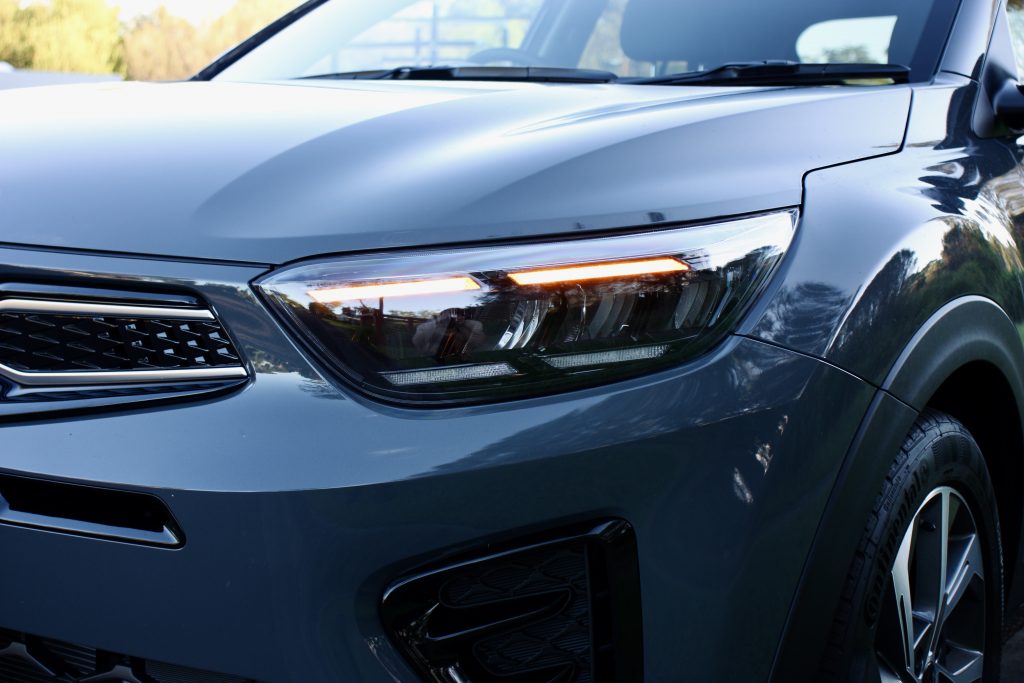
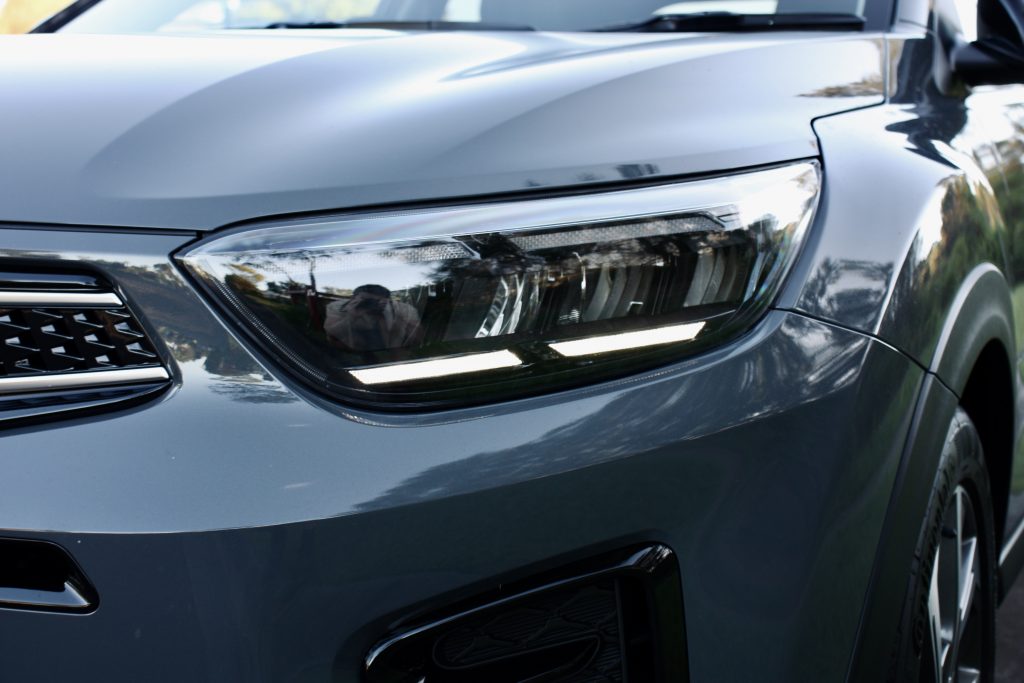
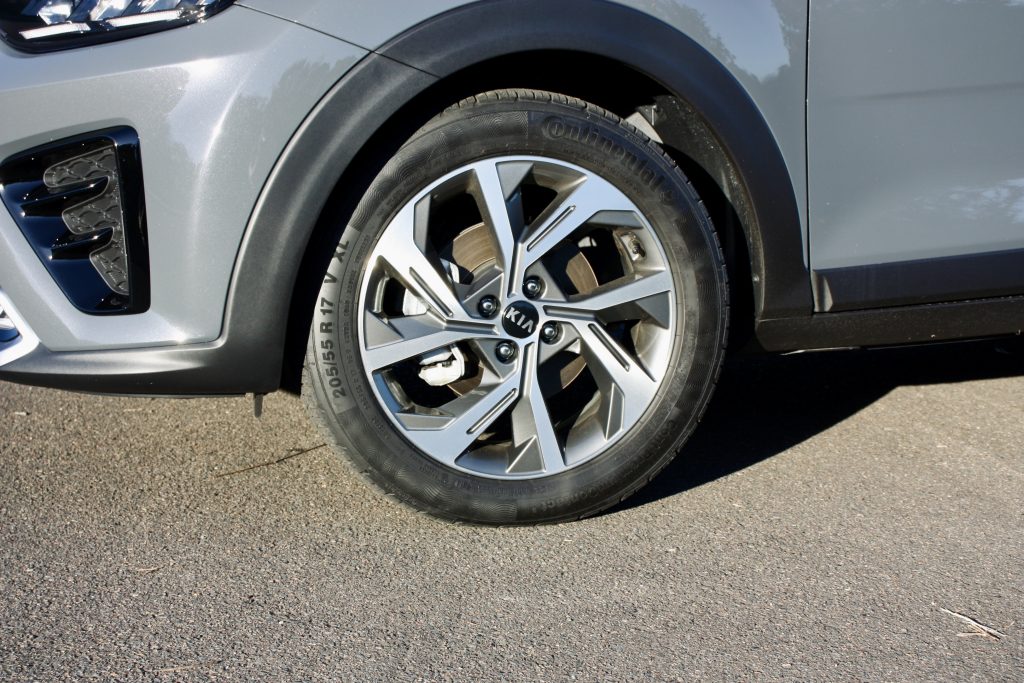
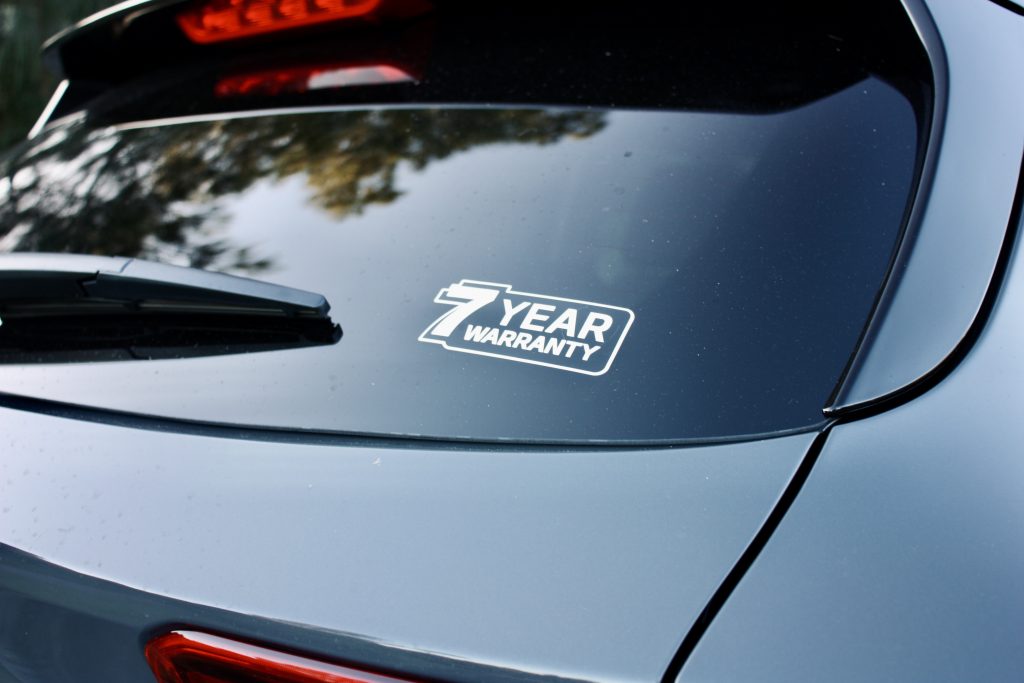
Feel-good bits exclusive to the 2021 Kia Stonic GT-Line includes unique 17-inch wheels, a sportier bodykit, selectable driving modes, faux leather seats, a sports ‘premium’ (read: faux leather) steering wheel and gear selector, a carbon fibre-look dashboard facia, an auto-dimming rearview mirror, LED headlights with LED daytime running lights and LED front fog lights, automatic wipers, single-zone climate control with auto-defogging and, for single-colour options, a sunroof (choosing a black roof deletes it, curiously).
The party piece in spending $4,000 extra for the GT-Line is that it trades the Sport’s asthmatic 1.4-litre for a 1.0-litre turbocharged three-cylinder petrol engine and a seven-speed dual-clutch automatic transmission. More on that in a bit.
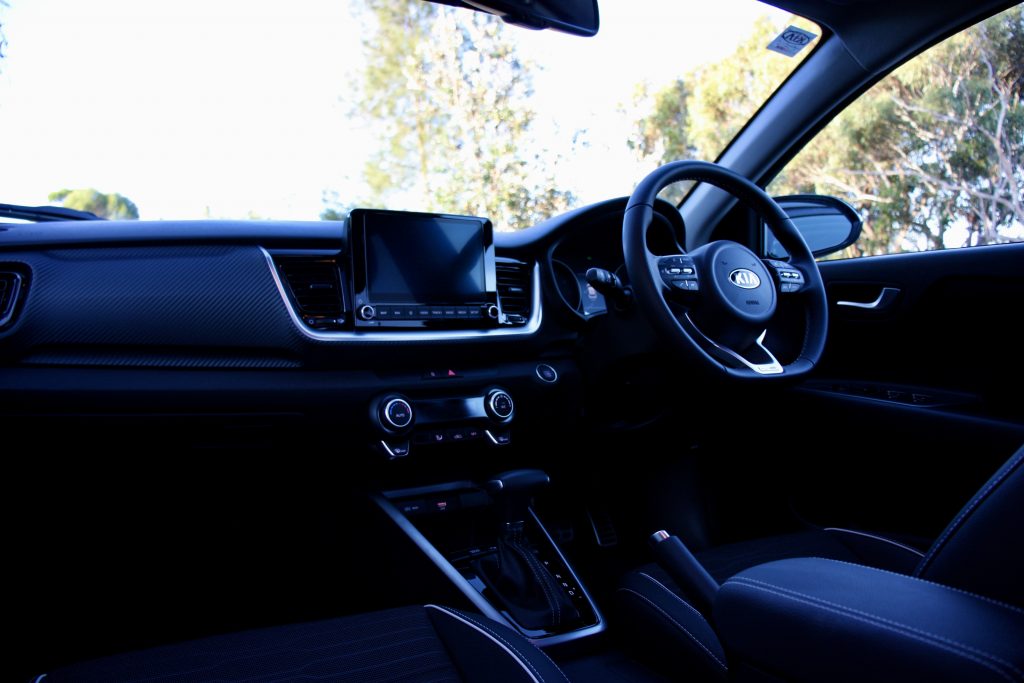
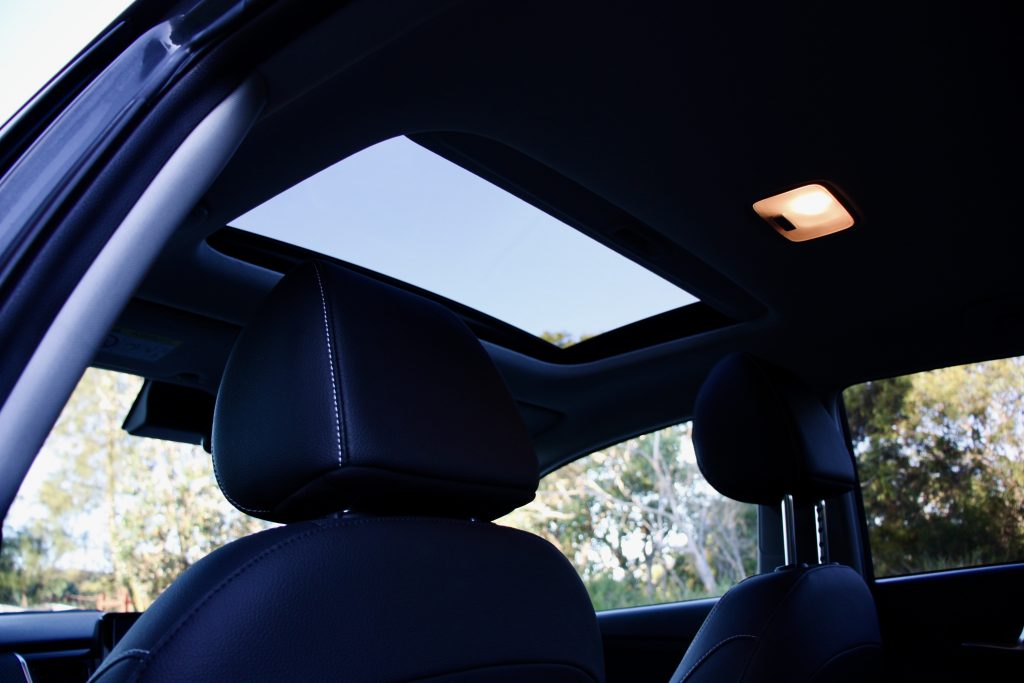
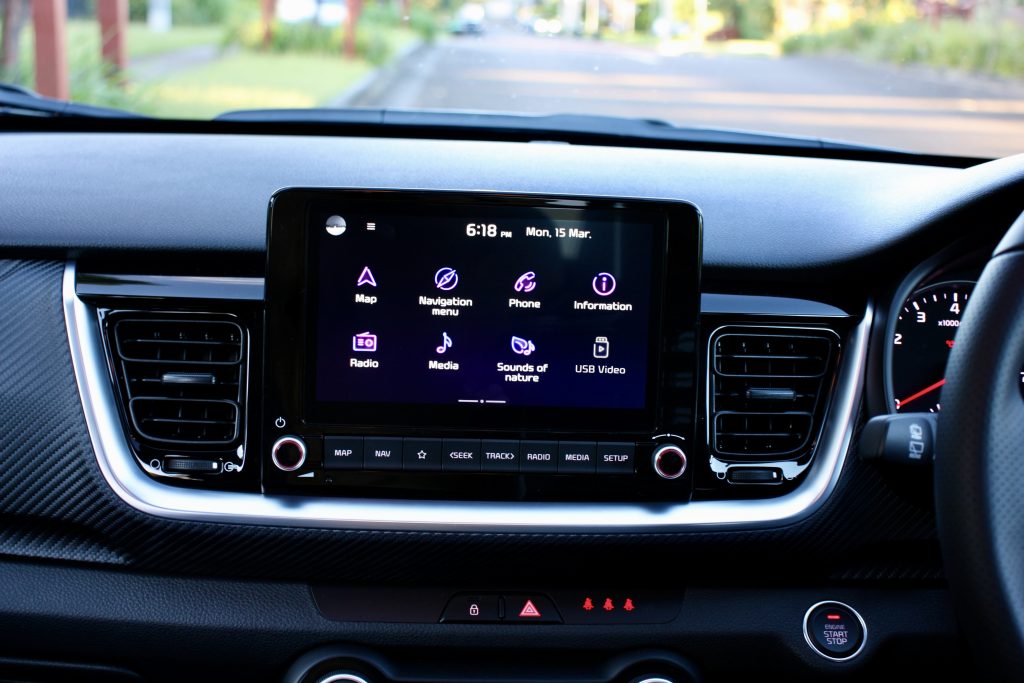
In terms of options, you can have with your Stonic is a range of metallic paints, including ‘Sporty Blue’, ‘Signal Red’, ‘Mighty Yellow’, ‘Silky Silver’, ‘Perennial Grey’ and ‘Aurora Black’. ’Clear White’ is the only no-cost option.
The 2021 Kia Stonic GT-Line’s closest competitors come in the form of Hyundai’s top-shelf Venue Elite and Skoda’s base Kamiq 85TSI. The former will set you back $30,518 drive away and offer you very similar bang for you buck. The Stonic looks better on paper thanks to its more sophisticated drivetrain, LED headlights and rain-sensing wipers. The Kamiq on the other hand offers comparable equipment to the Stonic plus an electronic tailgate, 18-inch alloys, dual-zone climate control, rear air vents, a fully-digital driver’s display, an extra airbag, adaptive cruise control and a higher quality interior for a reasonable $29,990 drive away for the dual-clutch transmission. The only problem is that the Skoda Kamiq 85TSI is sold out until 2022, so the cheapest model you can get currently is the new 110TSI Ambition for $32,990 drive away.
Performance & Economy: 8/10
In our review of the Stonic Sport, one of our biggest gripes was the anaemic and thirsty engine. It detracts from an otherwise convincing package and dates the entire driving experience. Luckily, the GT-Line’s 1.0-litre turbocharged three-cylinder petrol engine is exactly what the doctor ordered. It also swaps out the six-speed conventional automatic for a seven-speed dual-clutch transmission. The smaller power plant delivers an identical 74kW, albeit at a more useful 4,000rpm versus the Sport’s 6,000rpm, and delivers a much healthier 172Nm of torque versus the Sport’s 133Nm. This helps the Stonic sprint to 100km/h in 12 seconds, which doesn’t sound all that impressive, but in the real world that increase in torque counts for a lot.
The in-gear urge is noticeable and even satisfying when on the go, making the Stonic feel quicker than the numbers suggest. Where the 1.4-litre forces you to mash the peddle to the floor, the 1.0-litre only needs a slight flex of the right foot to feel the torque build and get the little SUV moving. The loss of a cylinder also adds to its charm, with an endearing three-cylinder thrum that feels racier than the sedate four. When pushed it can get a little raucous but the engine rarely needs to be revved out, making for a more refined overall experience.
“Where the 1.4-litre forces you to mash the peddle to the floor, the 1.0-litre only needs a slight flex of the right foot to feel the torque build and get the little SUV moving.”
The dual-clutch automatic transmission is also a good unit. Kia has taken its time to get the calibration of its dual-clutch transmissions right, with both DCTs in the Seltos and Cerato struggling to know when to engage the clutch at lower speeds. The Stonic’s is somewhat of a revelation by comparison, feeling more in line with the recent efforts by some of its Euro competitors. Even with idle stop/start activated, the engine kicks back to life swiftly and the clutch engages without a jerk or a fuss. At higher speeds it’s also quick and decisive, helping the Stonic put the ‘sport’ in SUV.
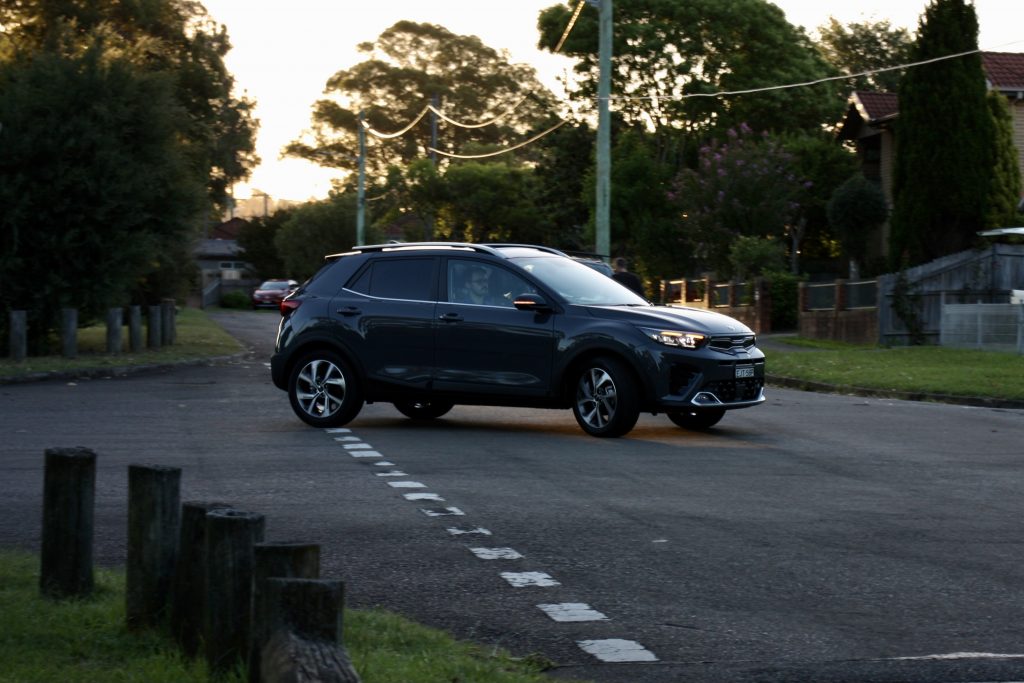
The move to a properly modern drivetrain also reaps the rewards in fuel economy. Compared to the Sport’s dismal 9.8L/100km, the GT-Line impressed with a much improved 7.5L/100km in mixed and enthusiastic driving. When being careful, we managed to get it below 6.0L/100km, if not down to Kia’s claimed figure of 5.4L/100km. While it’s great to see Kia Australia finally bringing idle stop/start technology its products locally, it’s a shame that the mild hybrid version of the 1.0-litre engine (that is rated at 88kW) is off the cards.
“Compared to the Sport’s dismal 9.8L/100km, the GT-Line impressed with a much improved 7.5L/100km in mixed and enthusiastic driving.”
The Hyundai Venue’s 1.6-litre engine and conventional automatic are decidedly more basic and offers an easy-to-live-with package but it ultimately drinks more than it should and lacks the handy midrange torque of the Stonic. The Skoda Kamiq is arguably a fairer comparison as it too runs a 1.0-litre turbocharged three-cylinder with a dual clutch. The two are very evenly matched in the way they drive, but the Stonic just edges the Kamiq thanks to its stop/start’s quicker reaction times where the Kamiq can take a second to gather its thoughts and get going.
Ride & Handling: 8/10
The 2021 Kia Stonic GT-Line gets the usual Kia treatment of local suspension tuning to help the car better manage our trying road conditions. We applaud Kia for resisting the urge to tune the GT-Line to be sportier and firmer than its lesser stablemates as what would be the point in a 74kW small SUV? Instead, the GT-Line benefits from the same competent ride and handling package as the rest of the range and is bolstered with high quality 205/55 R17 Continental ContiPremium rubber. Chuck the Stonic into a corner and it’s a fun little thing to throw around with a surprisingly adjustable rear end. Push it harder and you’ll quickly be met with predictable understeer and just enough body roll to let you know not to get too carried away.
“…the GT-Line benefits from the same competent ride and handling package as the rest of the range and is bolstered with high quality 205/55 R17 Continental ContiPremium rubber.”
The Stonic rides on a simple torsion setup at the rear, even thought that’s pretty common at this end of town, but that’s not to its detriment. It has a degree of plushness that belies its small dimensions. The light steering and lithe kerb weight helps it to feel nimble around town like you want a small SUV to feel but the well-judged damping means the Stonic manages higher speeds with confidence and sure-footedness. High-speed cruising is met with some wind and road noise but it otherwise offers a well-rounded and refined package.
“The light steering and lithe kerb weight helps it to feel nimble around town like you want a small SUV to feel but the well-judged damping means the Stonic manages higher speeds with confidence and sure-footedness.”
In terms of the driving experience, the Stonic feels more refined than the Hyundai Venue at high speeds thanks to its torquier engine and taller seventh gear. The Skoda Kamiq one ups the Stonic thanks to being a quieter cruiser courtesy of better road and wind insulation.
Interior & Practicality: 7.5/10
The 2021 Kia Stonic GT-Line’s biggest hurdle in an increasingly competitive segment with new contenders arriving left, right and centre is its four-year old interior. Yes, it might be new to our market but this interior has been doing the rounds in the form of the Rio and the Stonic overseas for a few years. Kia is pretty good at rolling out updates to their cars to keep tech fresh, but there are some elements that left us wanting.
The overall design is clean and inoffensive, but it’s not exactly interesting or aspirational. The materials are functional and hard wearing – good for longevity, yes, but not ideal when you have rivals like the Skoda Kamiq offering a plush, padded dashboard and soft upper door cards. The dash and doors feel hard and hollow, likely playing a part in allowing road noise to enter the cabin. Even the armrests on the doors aren’t padded, so long road trips will be met with sore elbows.
“The overall design is clean and inoffensive, but it’s not exactly interesting or aspirational. The materials are functional and hard wearing…”
It’s not all bad. Everything feels solid and our test car didn’t squeak or rattle regardless of the how rough the road surface was. The cabin is incredible user friendly and everything is exactly where you expect it to be. This is a car anyone can jump in and know how to operate everything with ease. The 8.0-inch infotainment touchscreen is perched high and within easy reach of the driver. Lower down you get a single-zone automatic climate control system, a button to swap drive modes and stop/start deactivation.
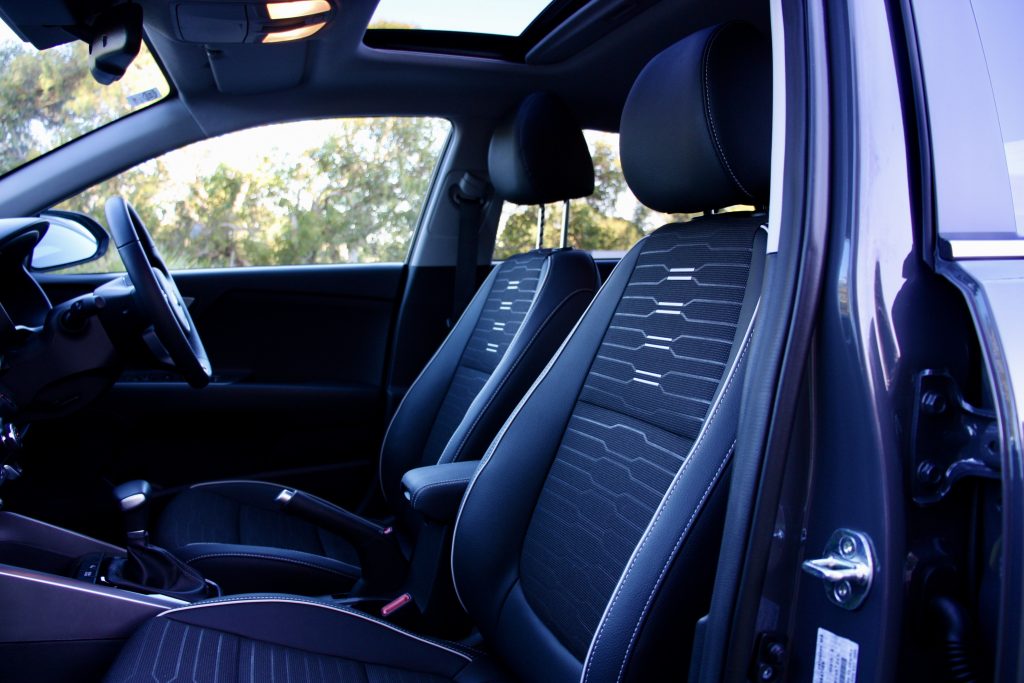
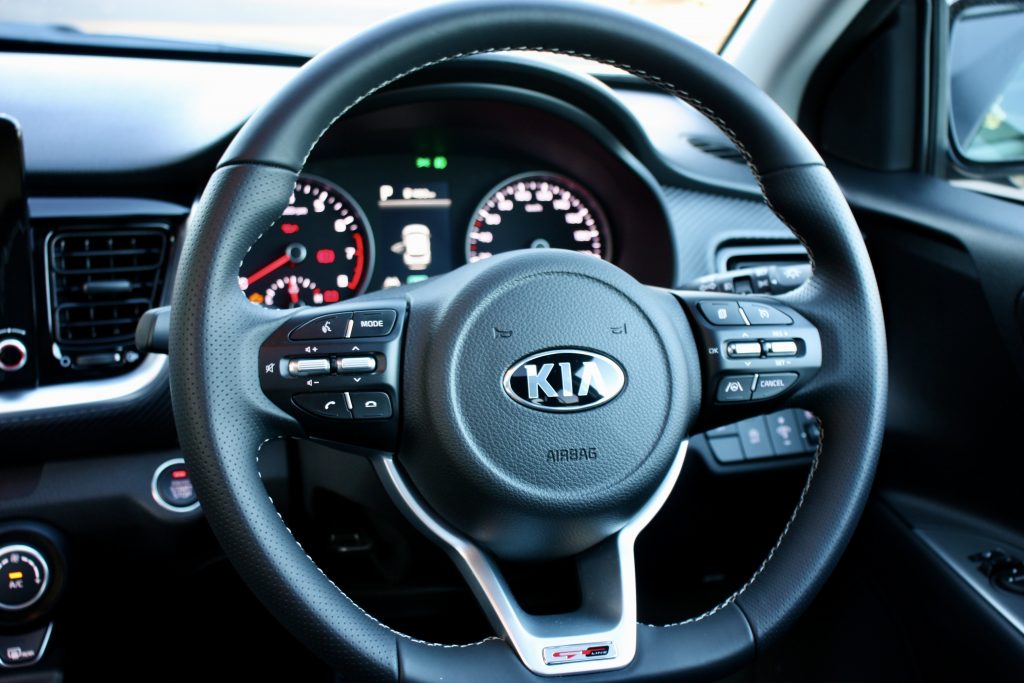
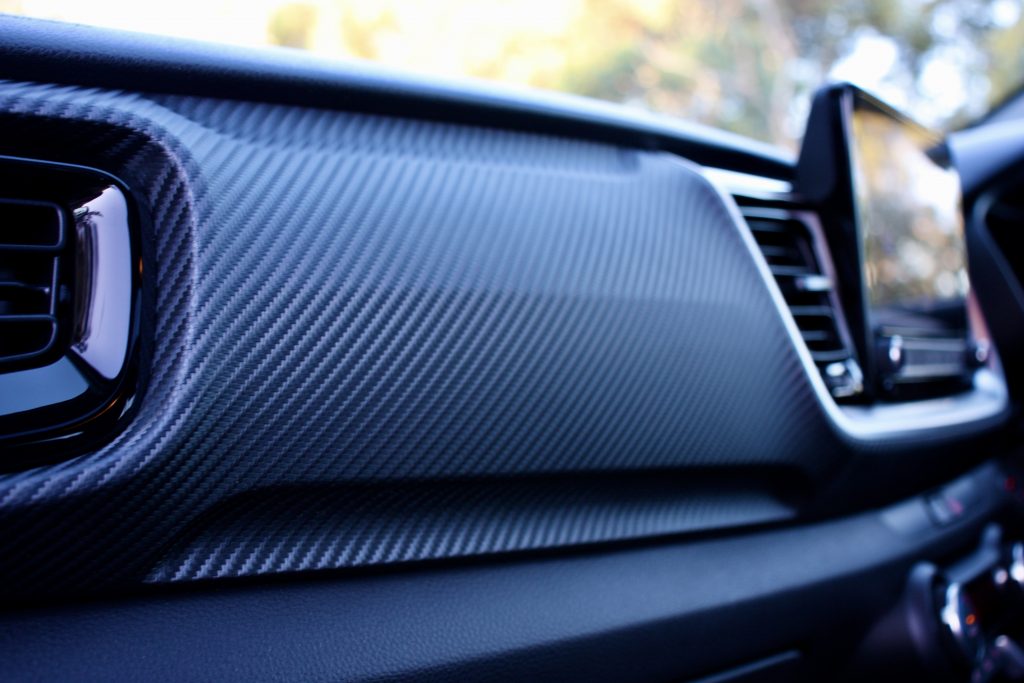
Design flourishes exclusive to the GT-Line include the cloth/artificial leather sports seats that look like they were inspired by on-trend athleisure, and they look as good as they feel. The increased bolstering is welcome from the decidedly flat seats in the Sport and there’s also a neat, if misguided, piece of carbon-look trim on the dash. The ‘premium’ sports steering wheel is also a good-looking unit that feels high quality in the hand.
“Design flourishes exclusive to the GT-Line include the cloth/artificial leather sports seats that look like they were inspired by on-trend athleisure, and they look as good as they feel.”
The 2021 Toyota Stonic’s 8.0-inch infotainment touchscreen is shared with many new Kia-Hyundai products. Despite the screen’s smaller real estate to Kia’s 10.25-inch screen, it actually runs the same software as those units which is a big win for the cheap and cheerul little SUV. It’s quick to respond, intuitive to navigate and comes with a range of useful features like voice memos. Despite having built-in navigation, most will no doubt use the wired Apple CarPlay or Android Auto. The sound system is reasonable for this end of town but it only packs in six speakers to the Skoda Kamiq’s eight.
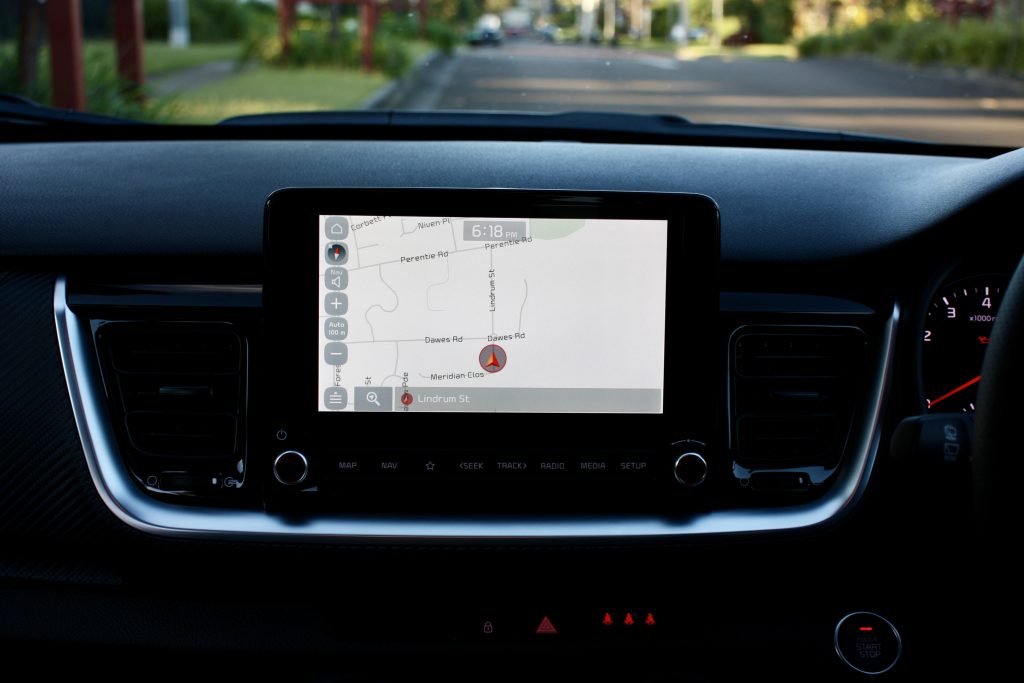

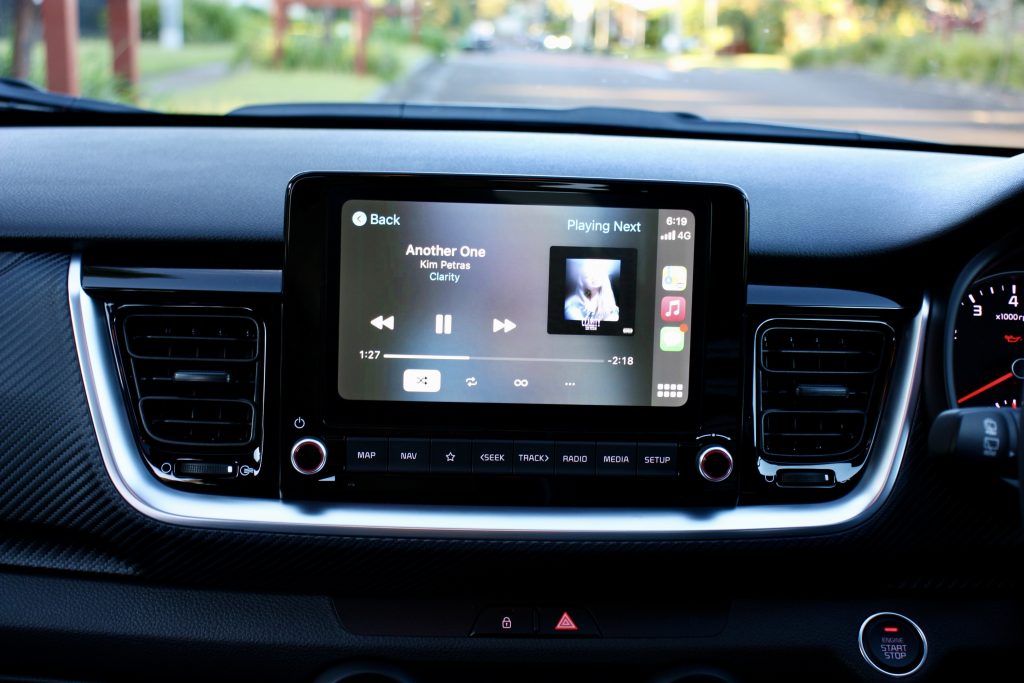
Where the infotainment system feels bang up to date, the lack of digital instrumentation leaves the Stonic feeling its age versus something like the Skoda Kamiq – which features Volkswagen Group’s excellent active info display as standard on even the base model. The Kia instead makes do with a 4.2-inch colour screen between conventional dials. It displays the digital speedo, drive modes, trip computer information and driver aid information – including a handy alert for when the car in front of you drives off.
Storage is reasonable with a tray in front of the shifter (although there is no wireless phone charging), a smallish centre bin under the armrest, two decent size cupholders and reasonably-sized door pockets. Backseat passengers have no such luck – with no air vents, no centre armrest and no cupholders. At least the legroom and headroom is good for the class and there’s a single USB-A port, bringing that car’s total to just two.
The Stonic’s boot is somewhere in the middle of the class at 352 litres and 1,155 litres with the rear seats folded. It loses points for the hump created by folding the rear seats, but it manages to somewhat redeem itself with a few handy features – including storage on the left of the boot, a hook on the underside of the parcel shelf, more hooks on the right hand side, and a temporary spare wheel. An adjustable boot floor would help make the space even more useful.
Where the Stonic falls in terms of interior quality and refinement it wins back points for its infotainment, sporty presentation and its reasonably commodious rear. The Skoda Kamiq trumps it for material quality, refinement, technology and boot size, but remember that the cheapest Kamiq you can get in your driveway in 2021 is nearly $3,000 more than the Stonic GT-Line.
Running Costs & Warranty: 8.5/10
The 2021 Kia Stonic GT-Line is backed by one of the most competitive warranties on the market, with seven-year/unlimited km coverage and one year of complimentary roadside assistance. Each year you bring your Stonic to Kia for a service you get an additional year of roadside assistance up to a total of eight years.
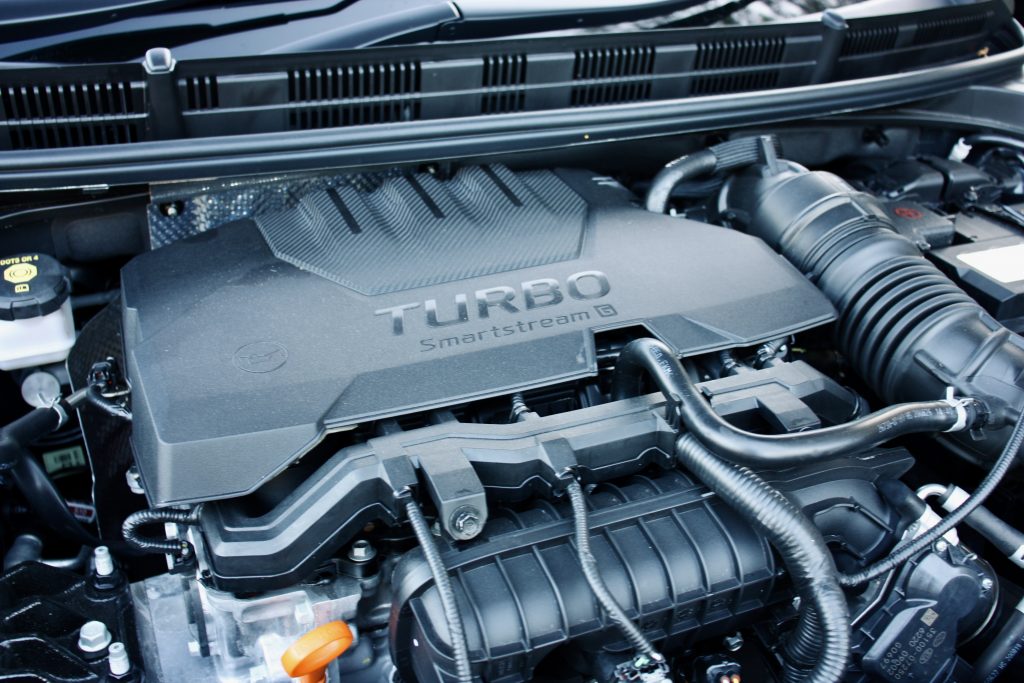
Servicing the 2021 Kia Stonic GT-Line over five years will set you back a not-insignificant $2,128 – averaging at $425 per service. You can also only travel 10,000km between visits to the dealership, which is less than ideal for those who pack on the kilometres.
“You can also only travel 10,000km between visits to the dealership, which is less than ideal for those who pack on the kilometres.”
A Hyundai Venue will only cost $1,624 over five years, a Skoda Kamiq 85TSI even less at $1,400. Both of these cars also let you travel 75,000kms in that time.
2021 Kia Stonic DiscoverAuto Rating: 8.2/10
The 2021 Kia Stonic GT-Line might have been late to the small SUV party in Australia but its here and ready to strengthen Kia’s four-strong SUV offence. And while some small SUVs have turned their backs on their light-car origins, instead mingling with mid sizers in terms of pricing, Kia has played it smart by keeping the Stonic range relatively wallet friendly.
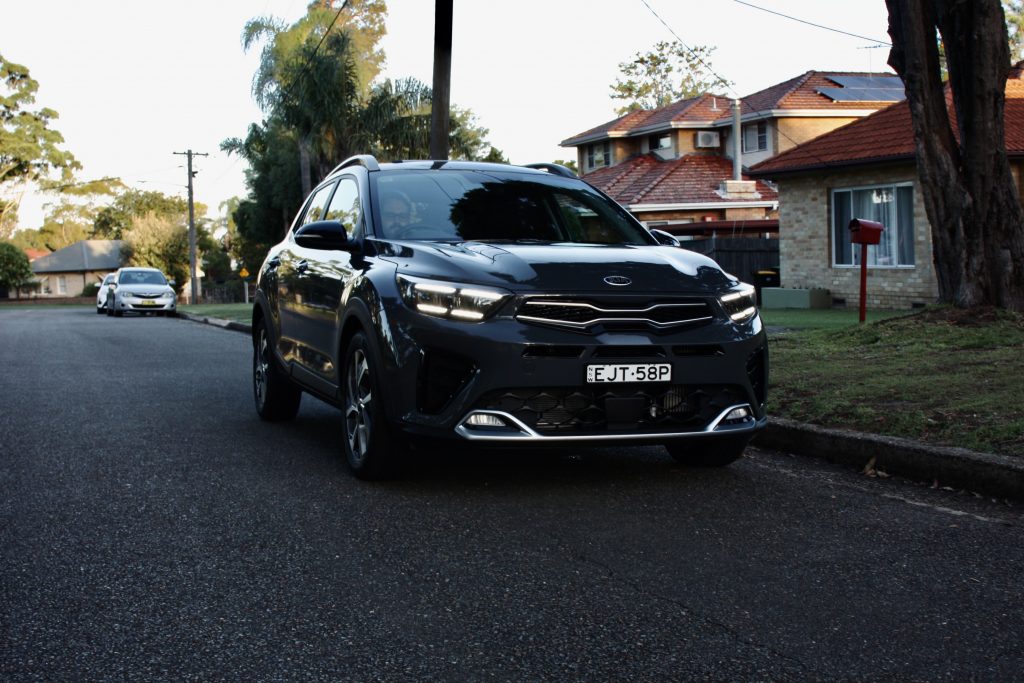
Even the Stonic GT-Line tops out at just over $30,000 rather than $40,000+. If you can get past the short service intervals and you’re not bothered with a plush interior, the Stonic GT-Line is a sporty little SUV that looks good, is well specced and offers a compelling driving experience. If anything, we think it’s the Stonic to buy.
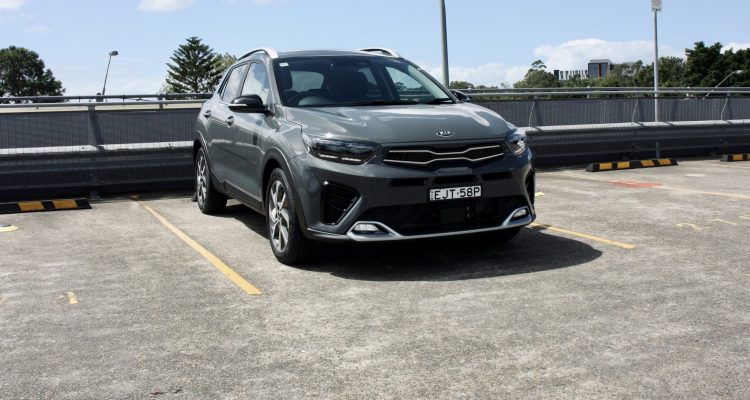
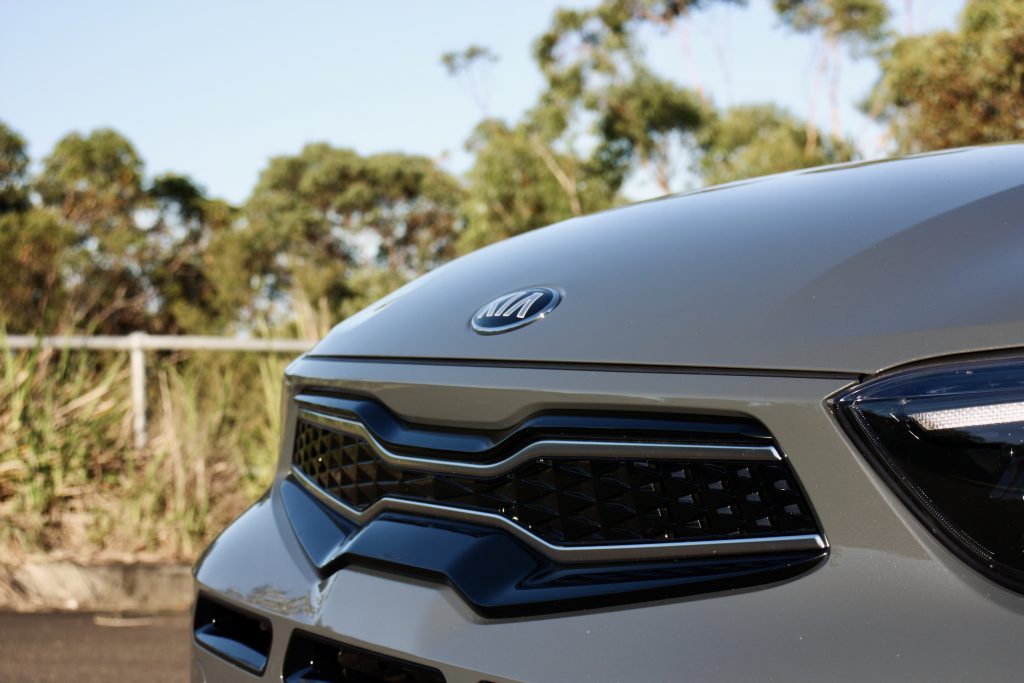
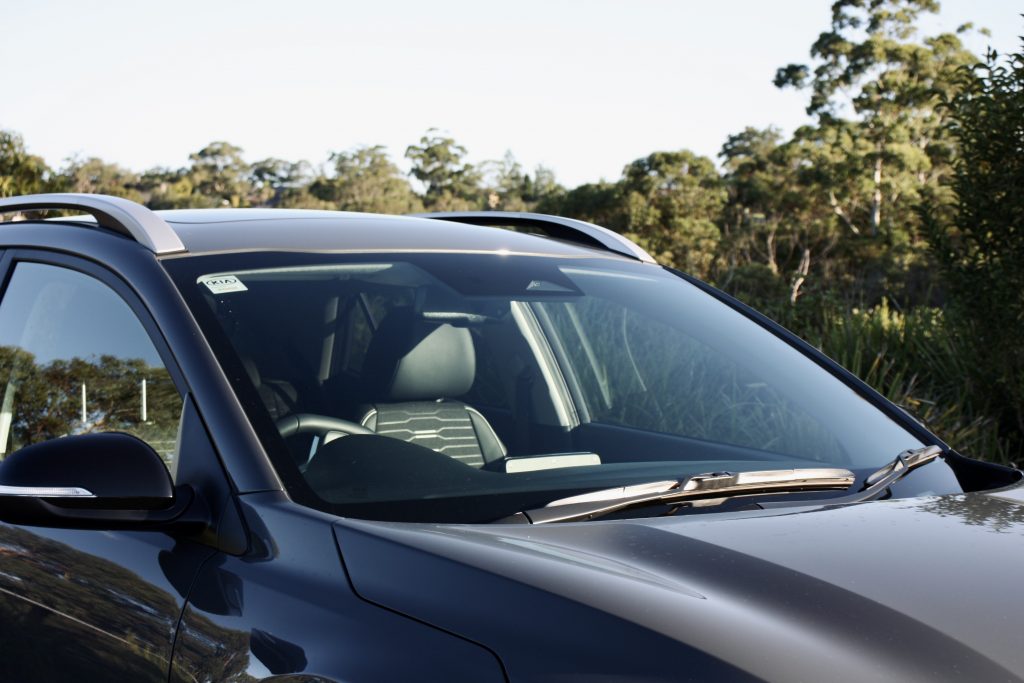
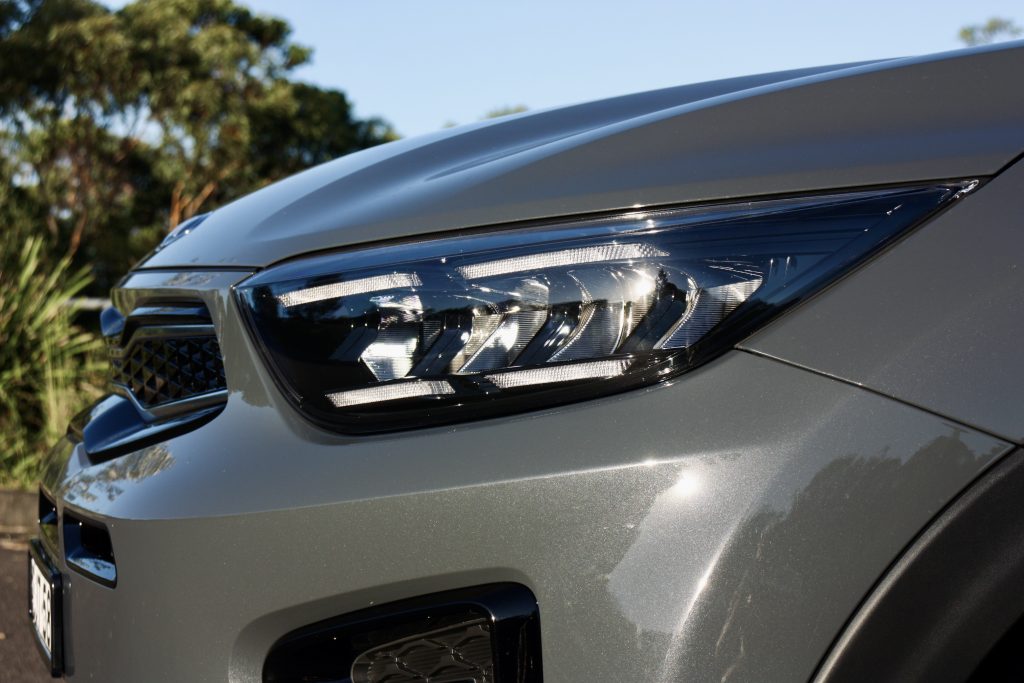
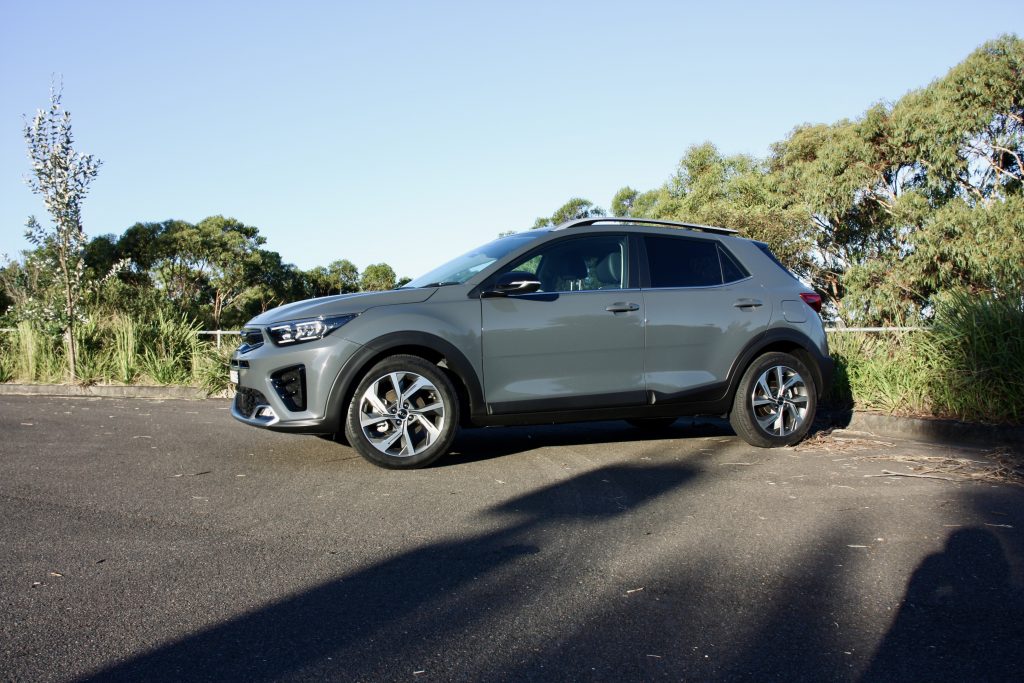
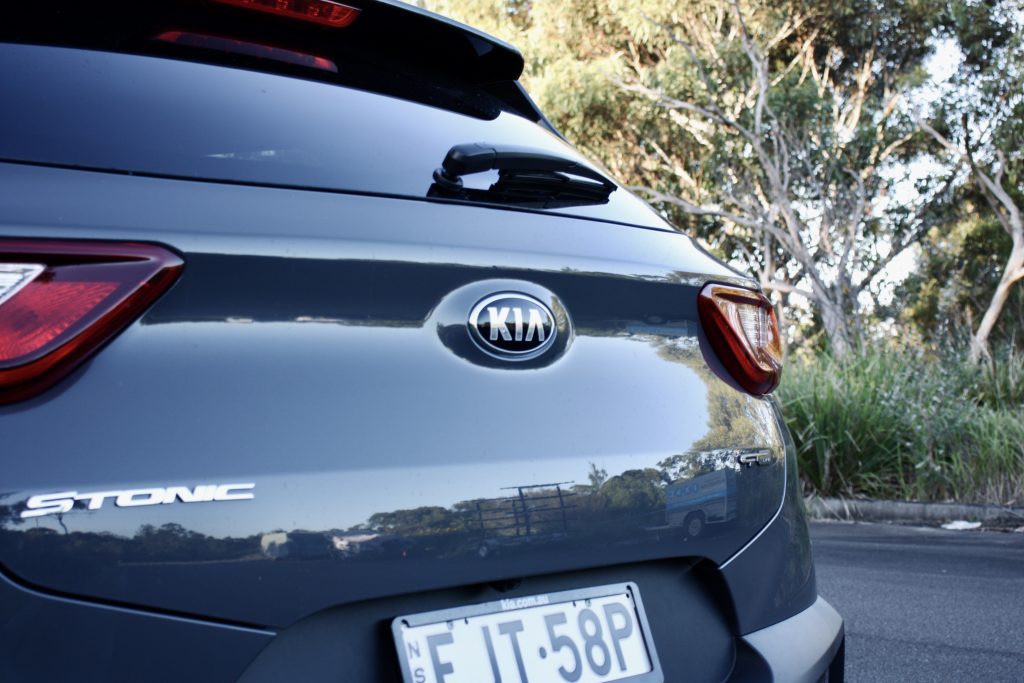
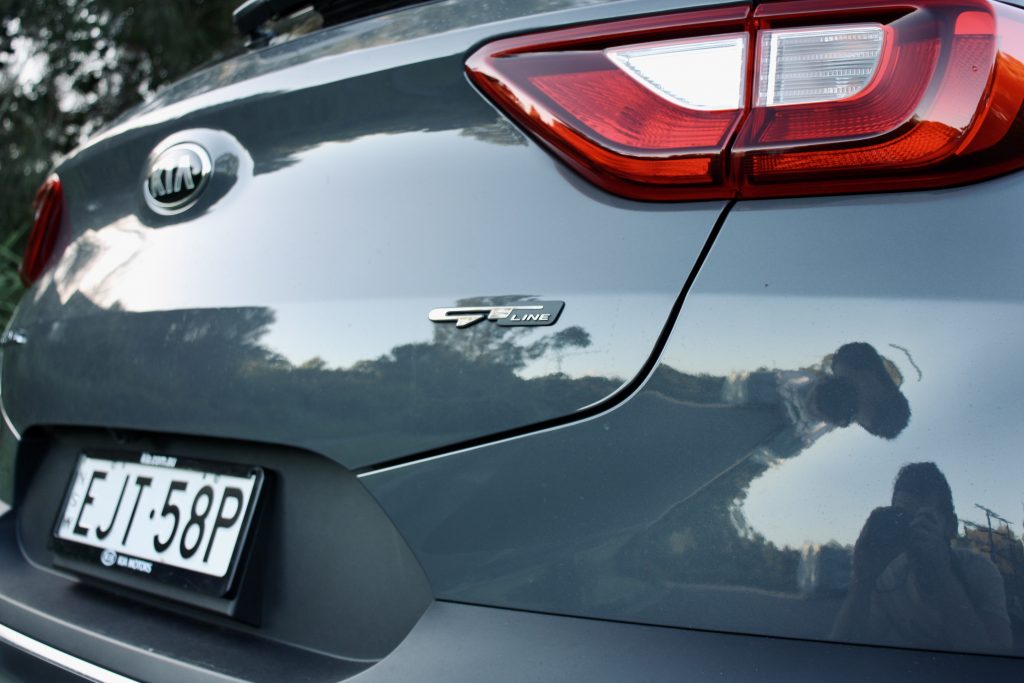
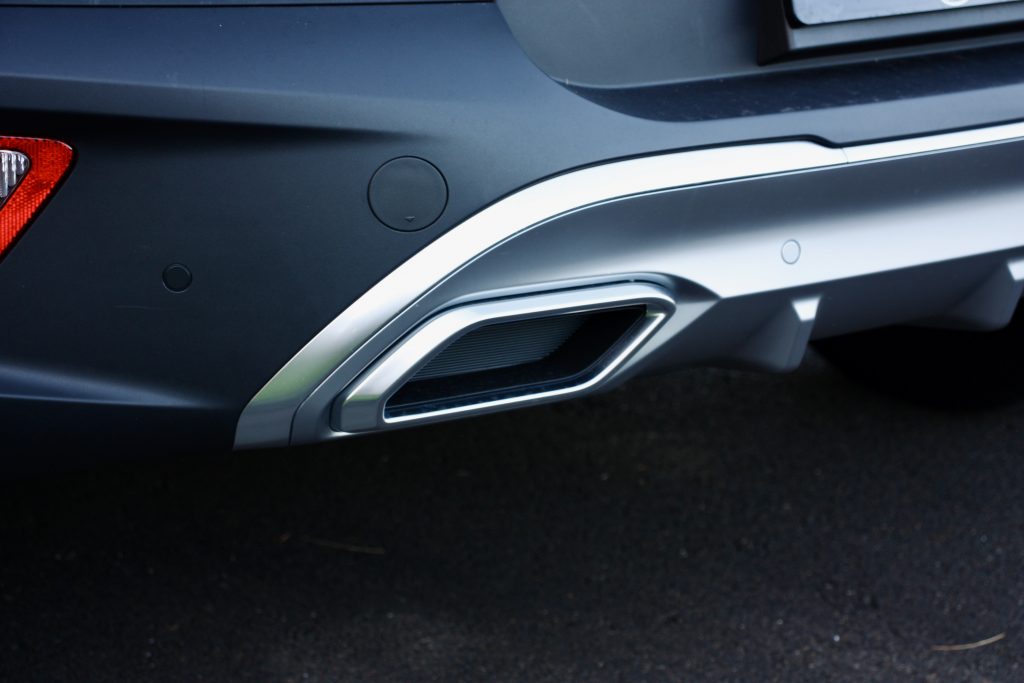
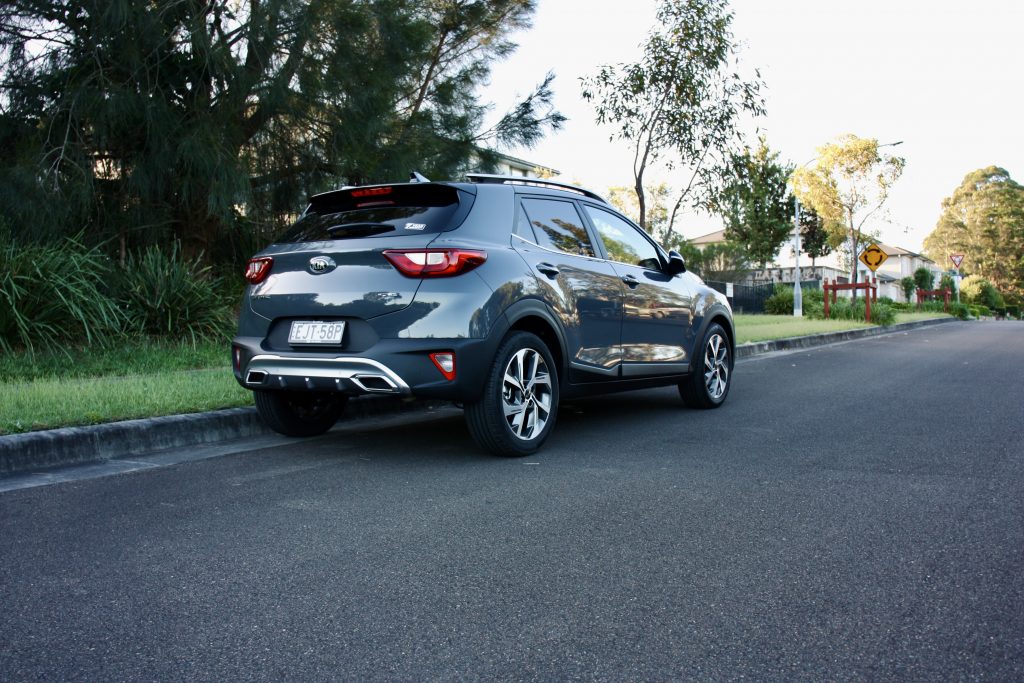
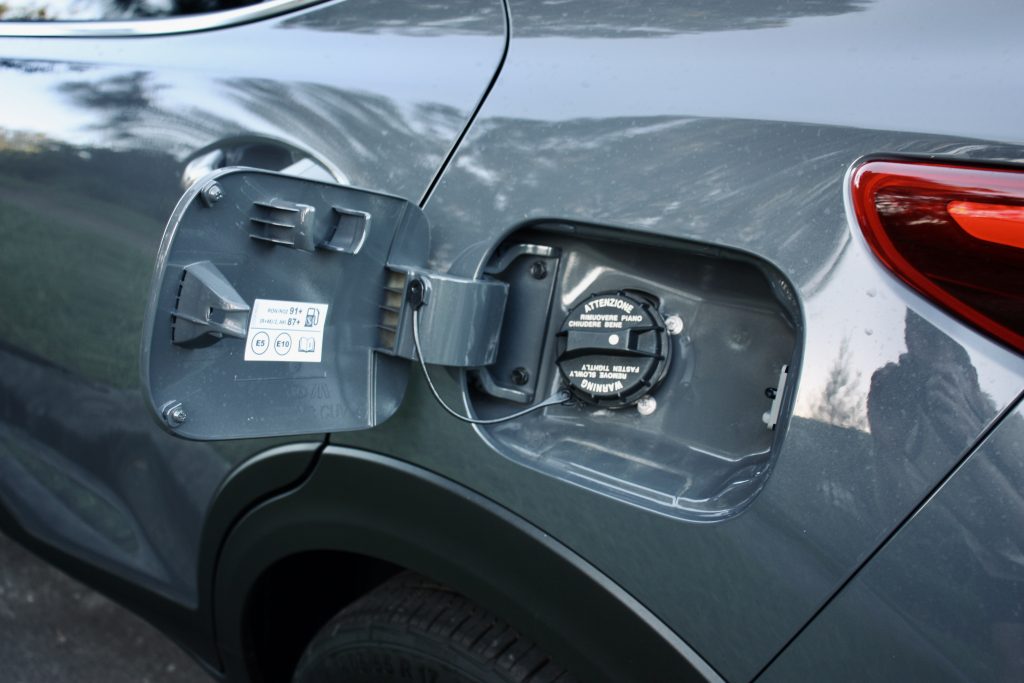
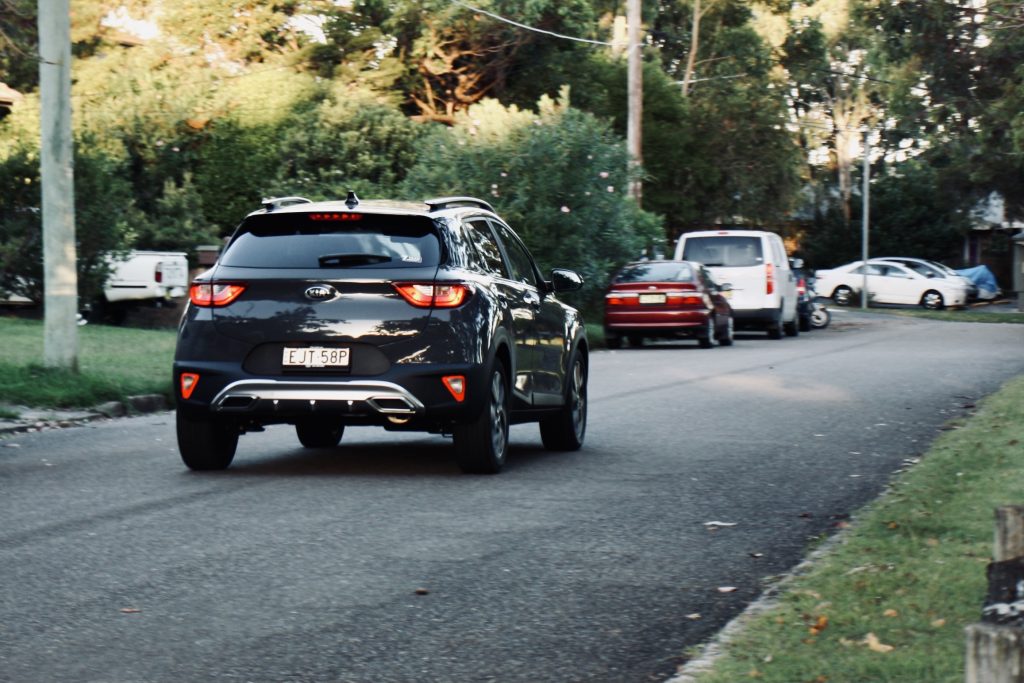
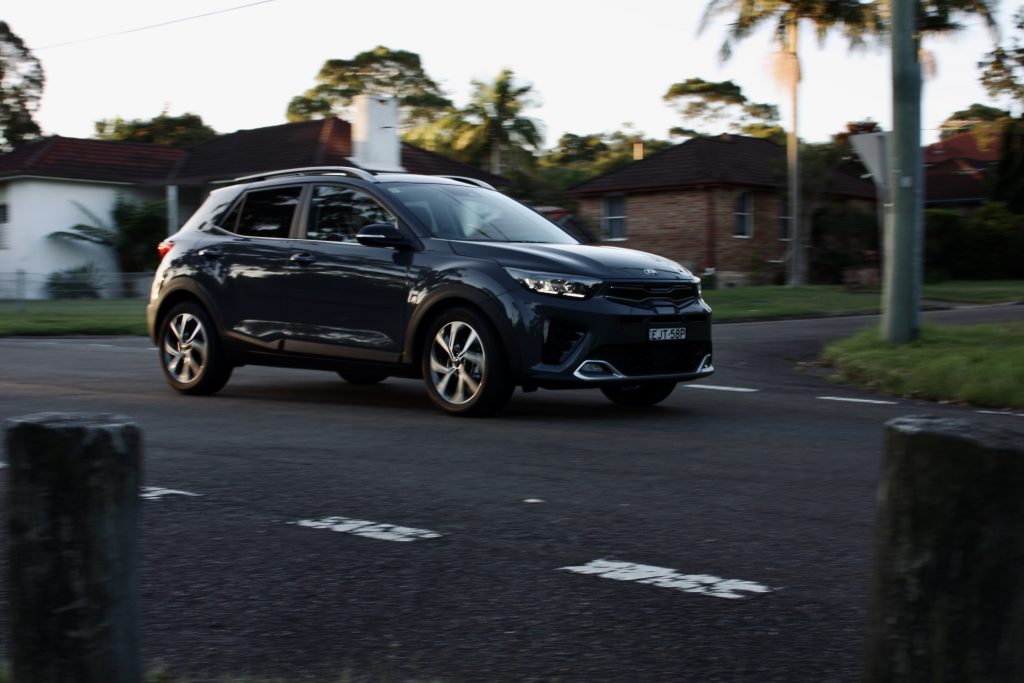
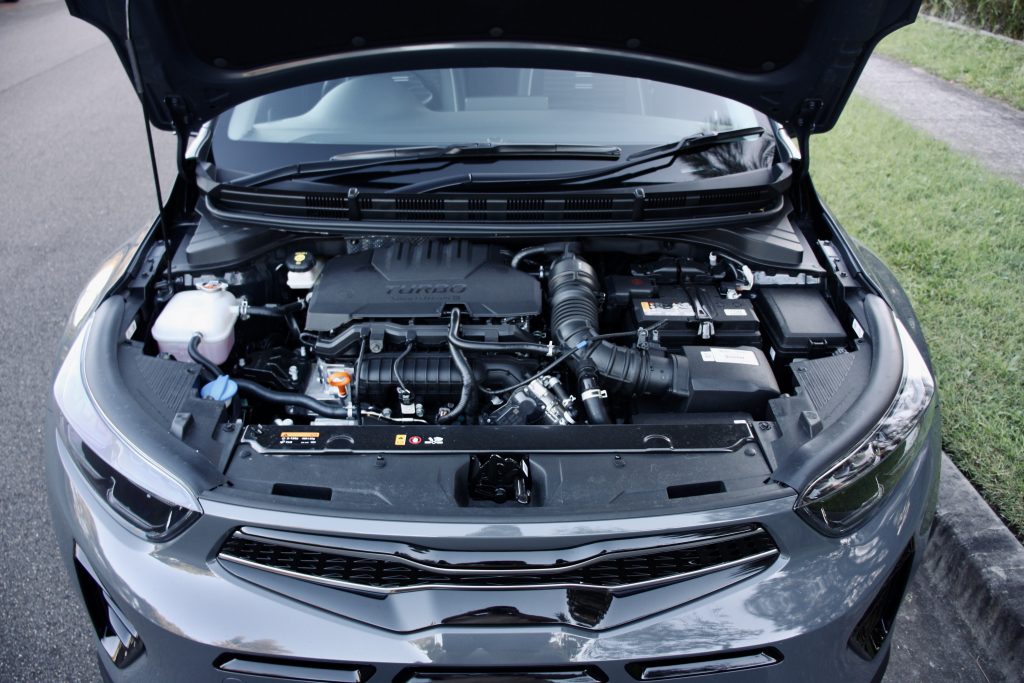
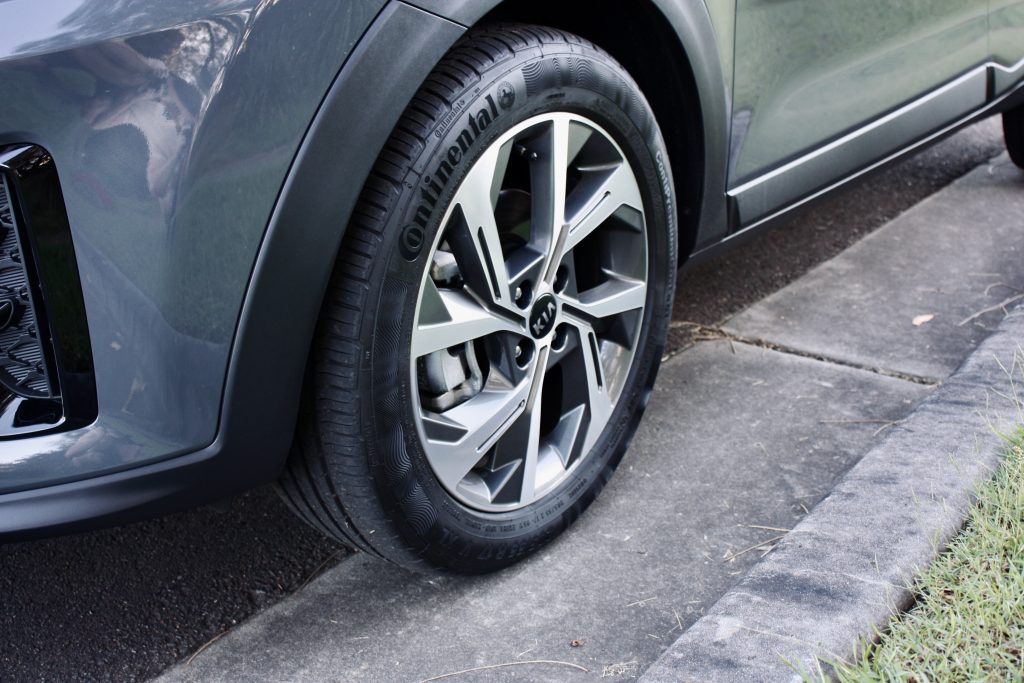
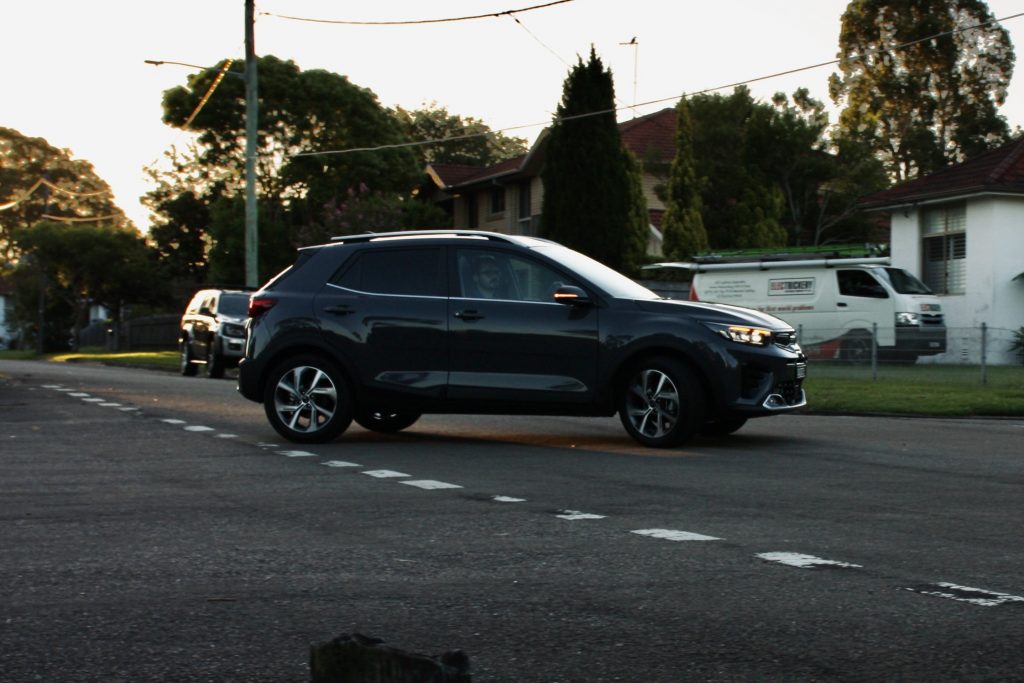
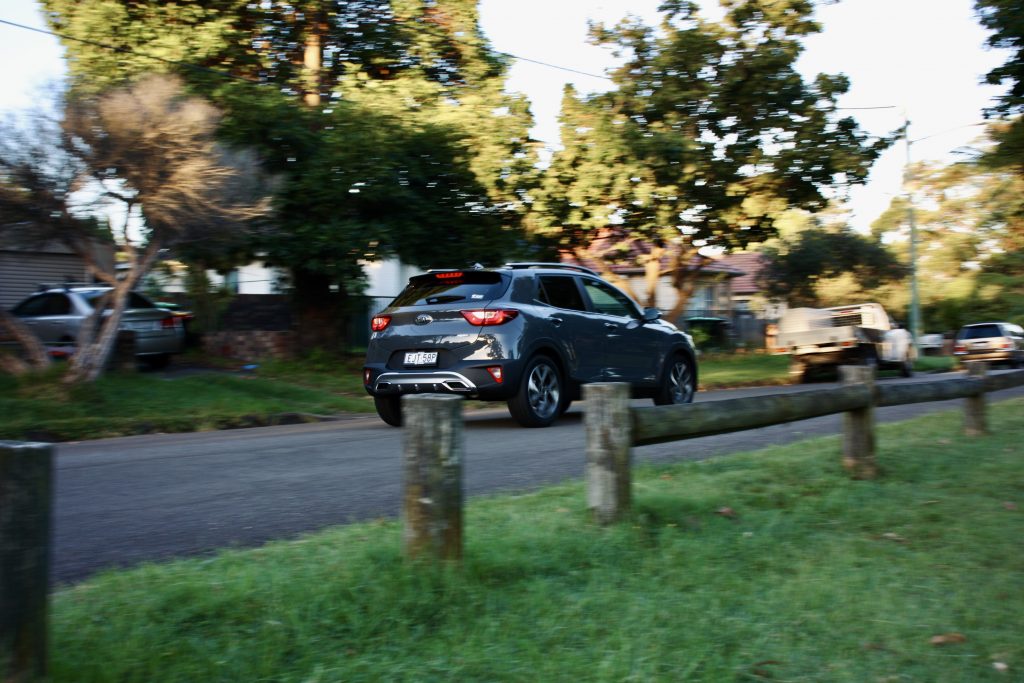
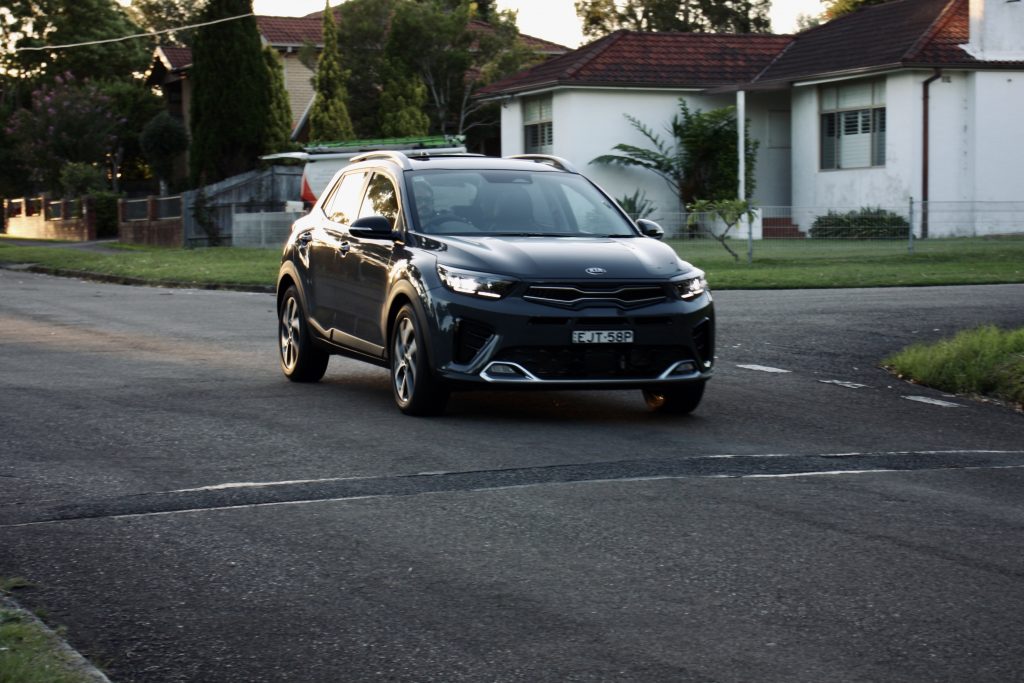
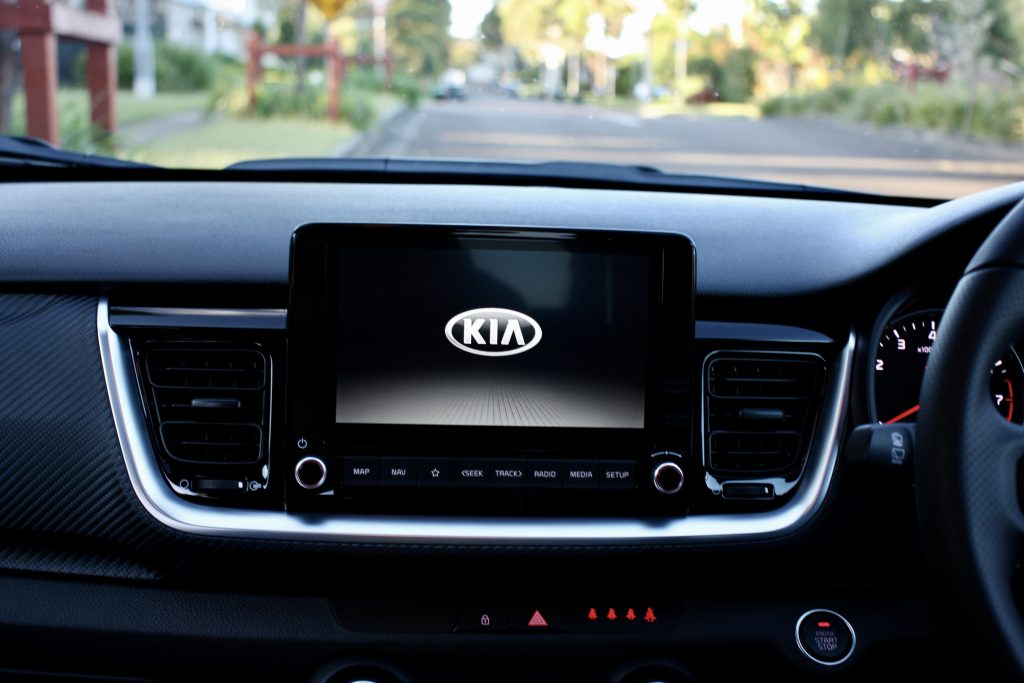
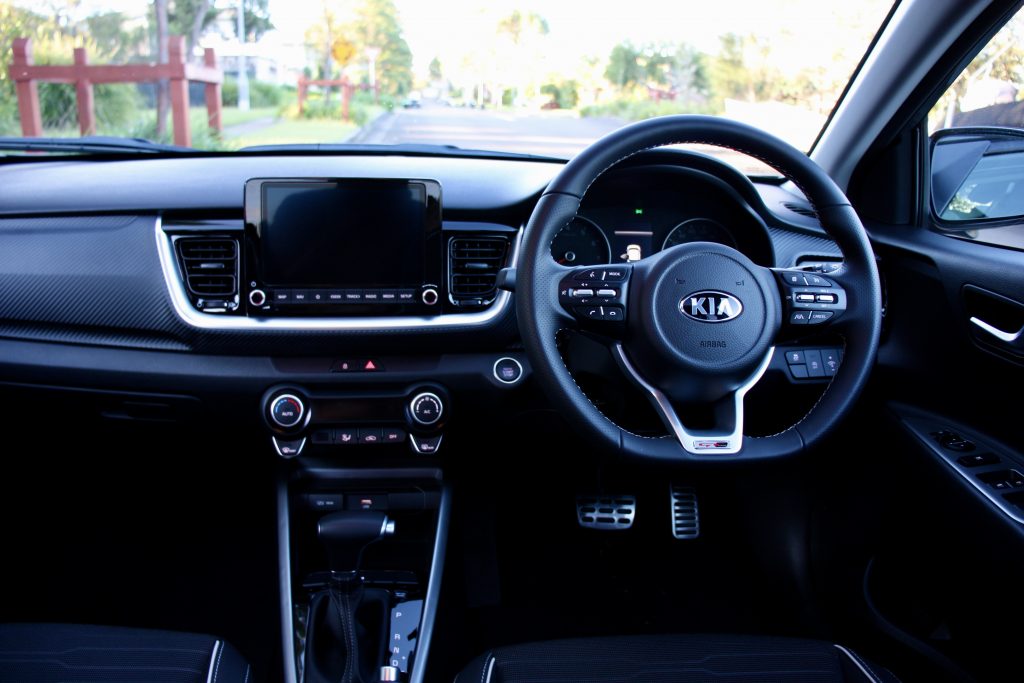
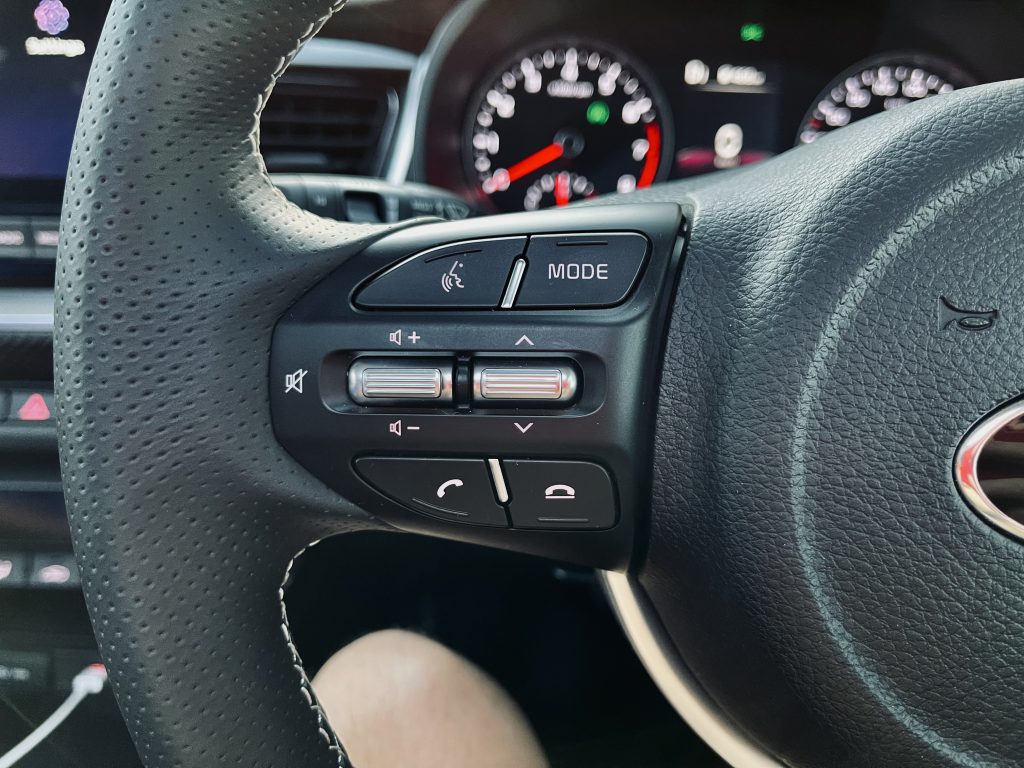
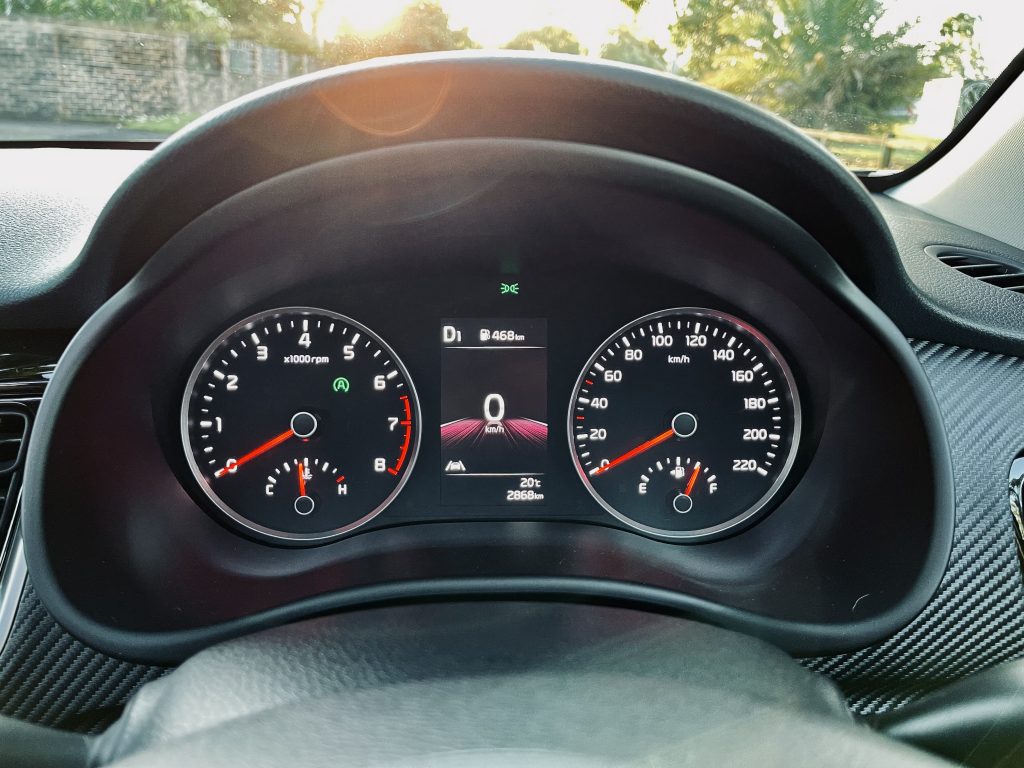
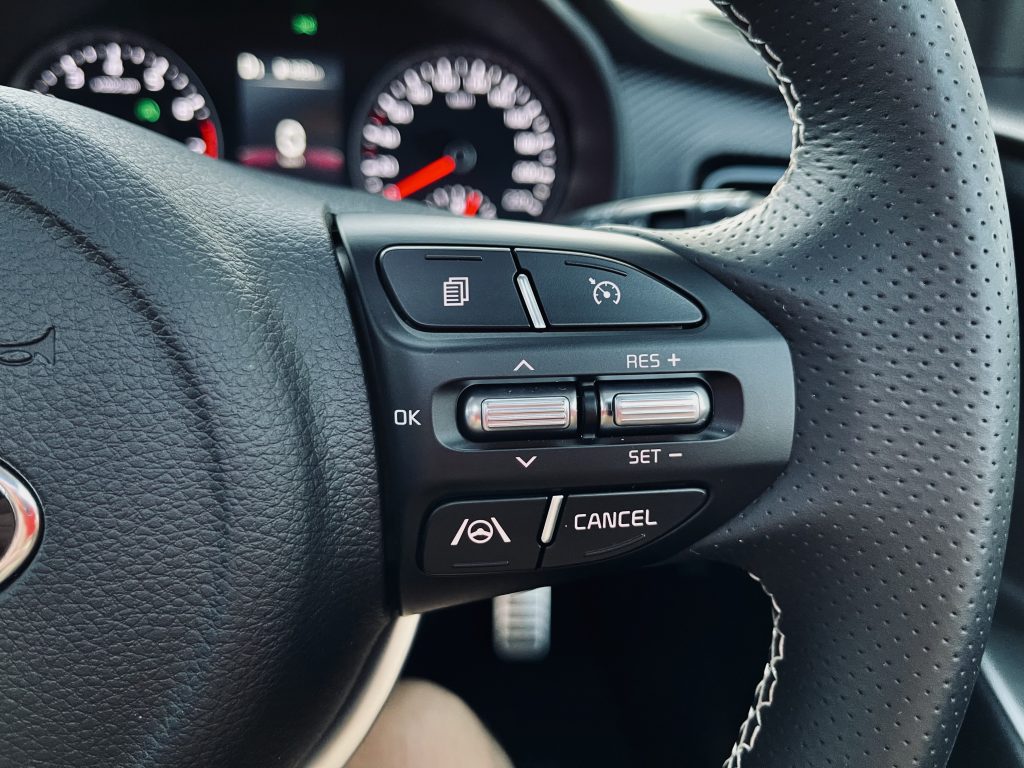
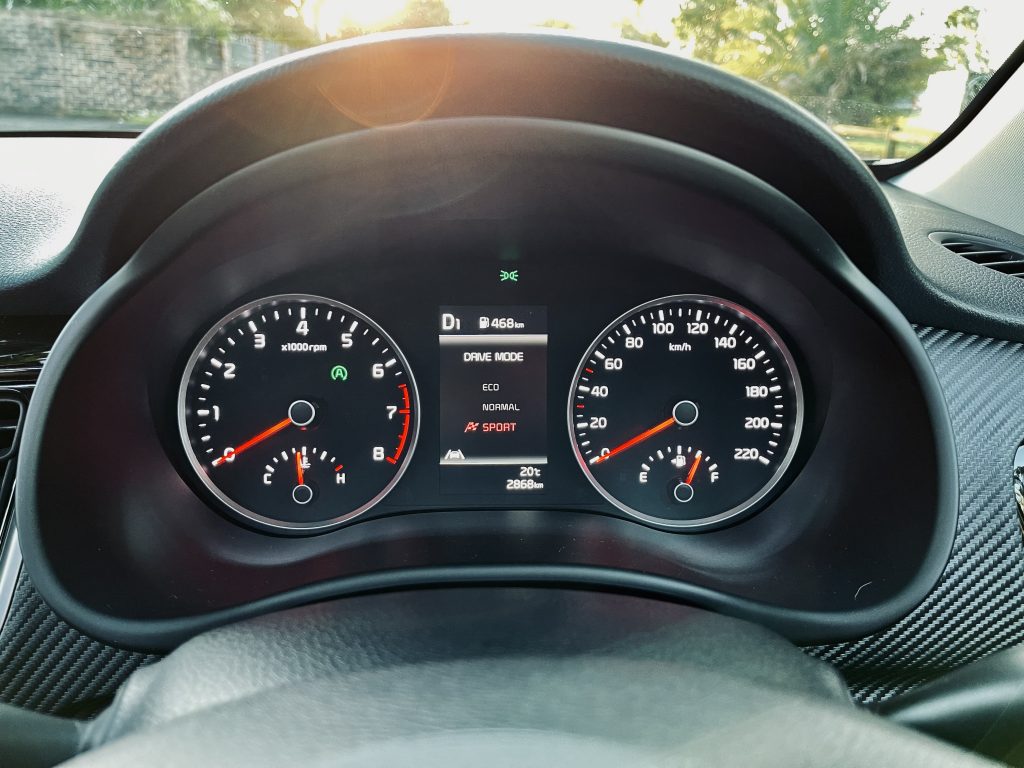
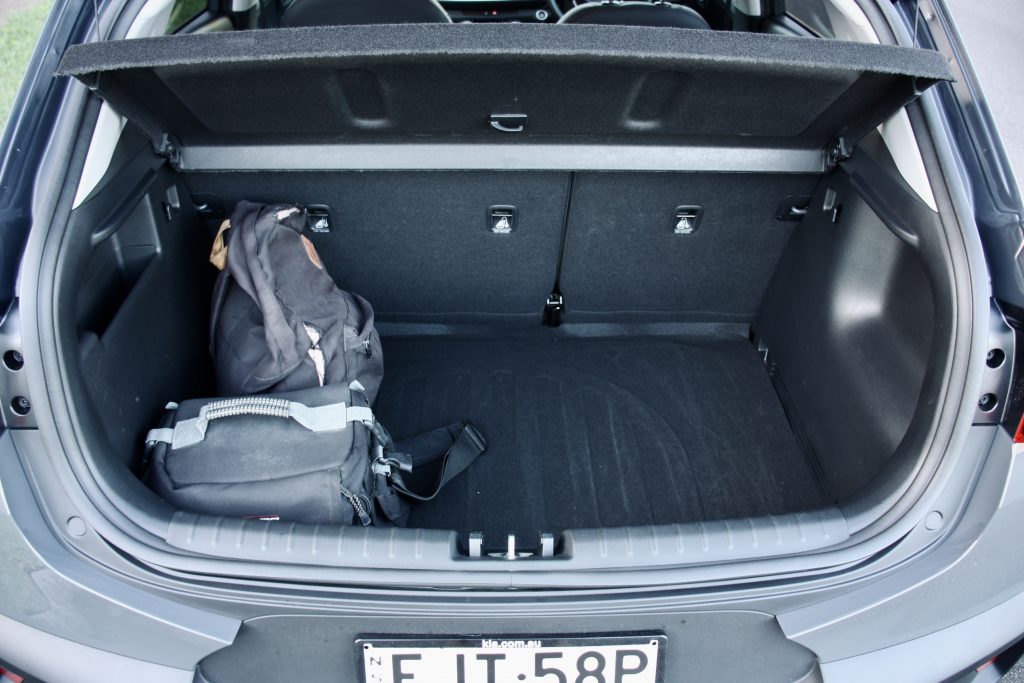
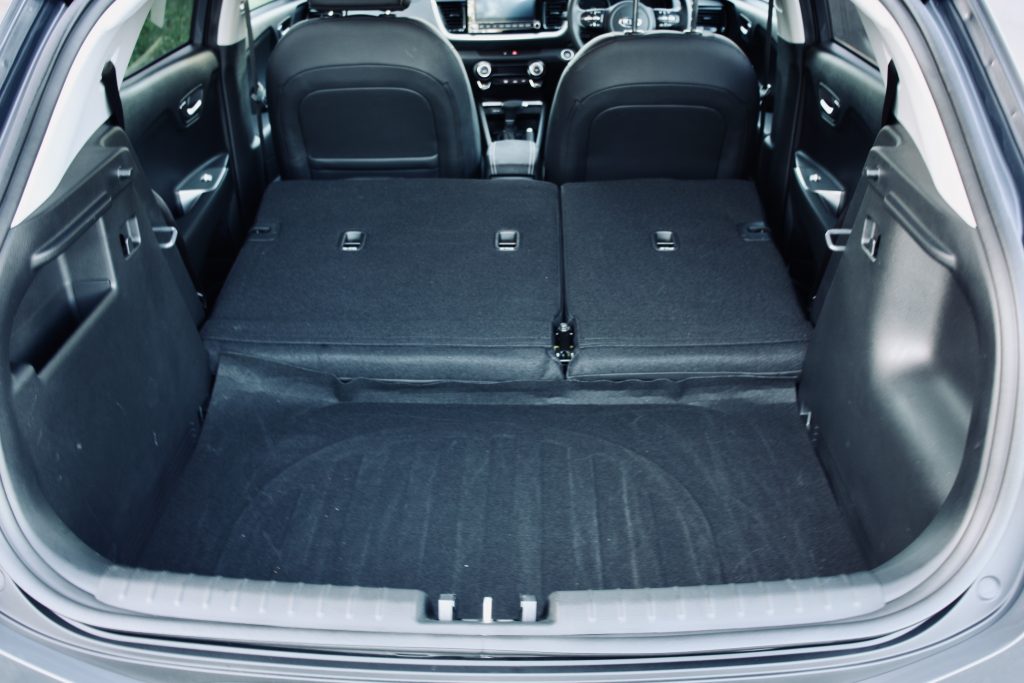
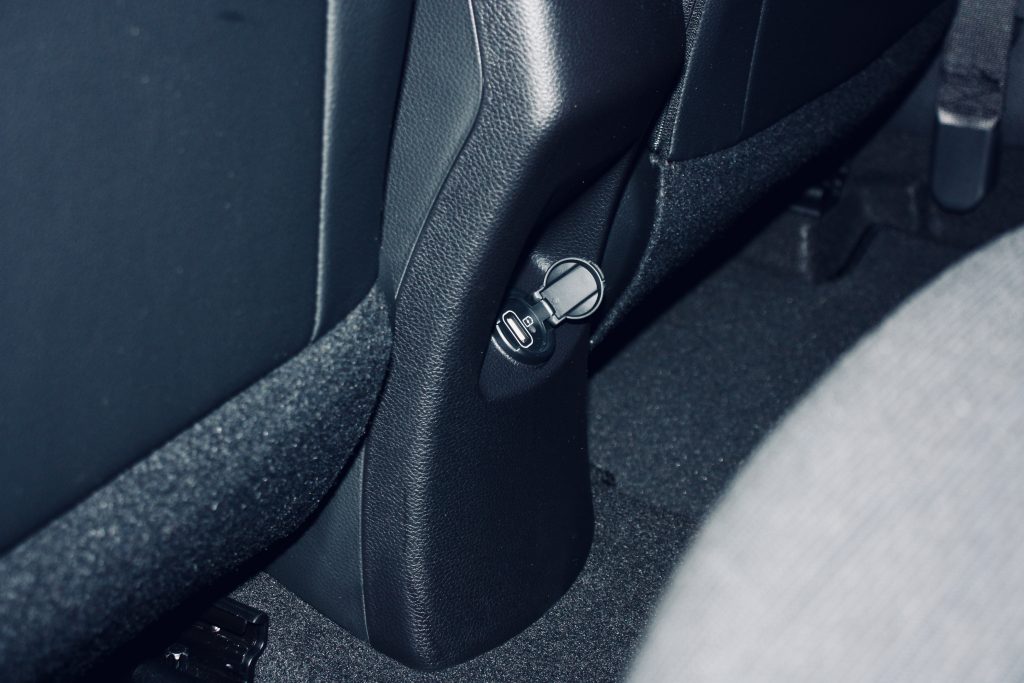
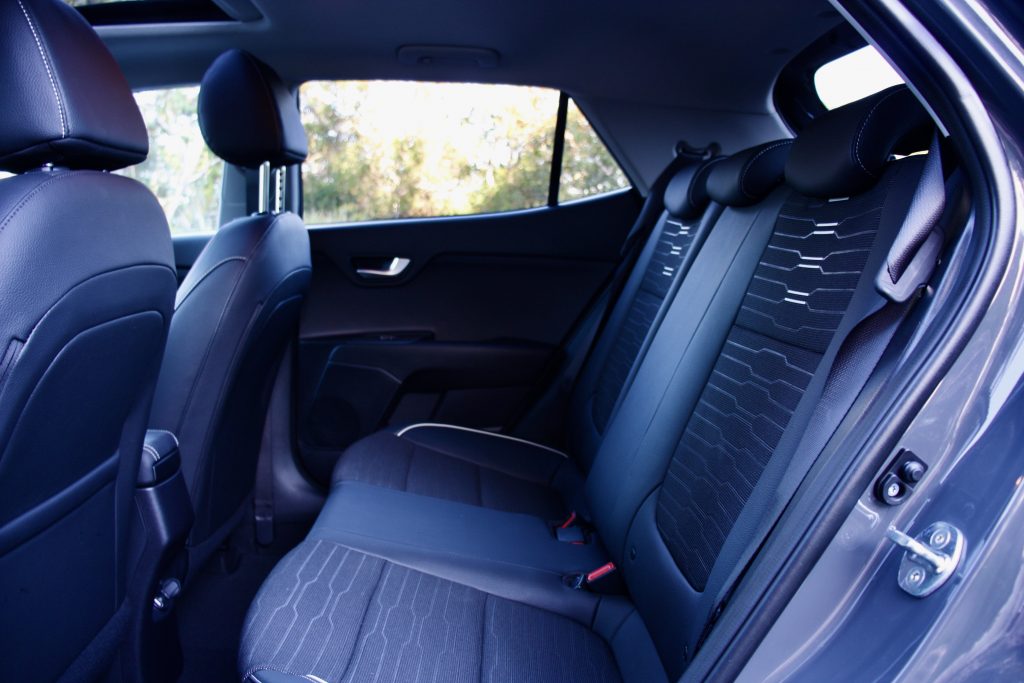
Leave a Reply